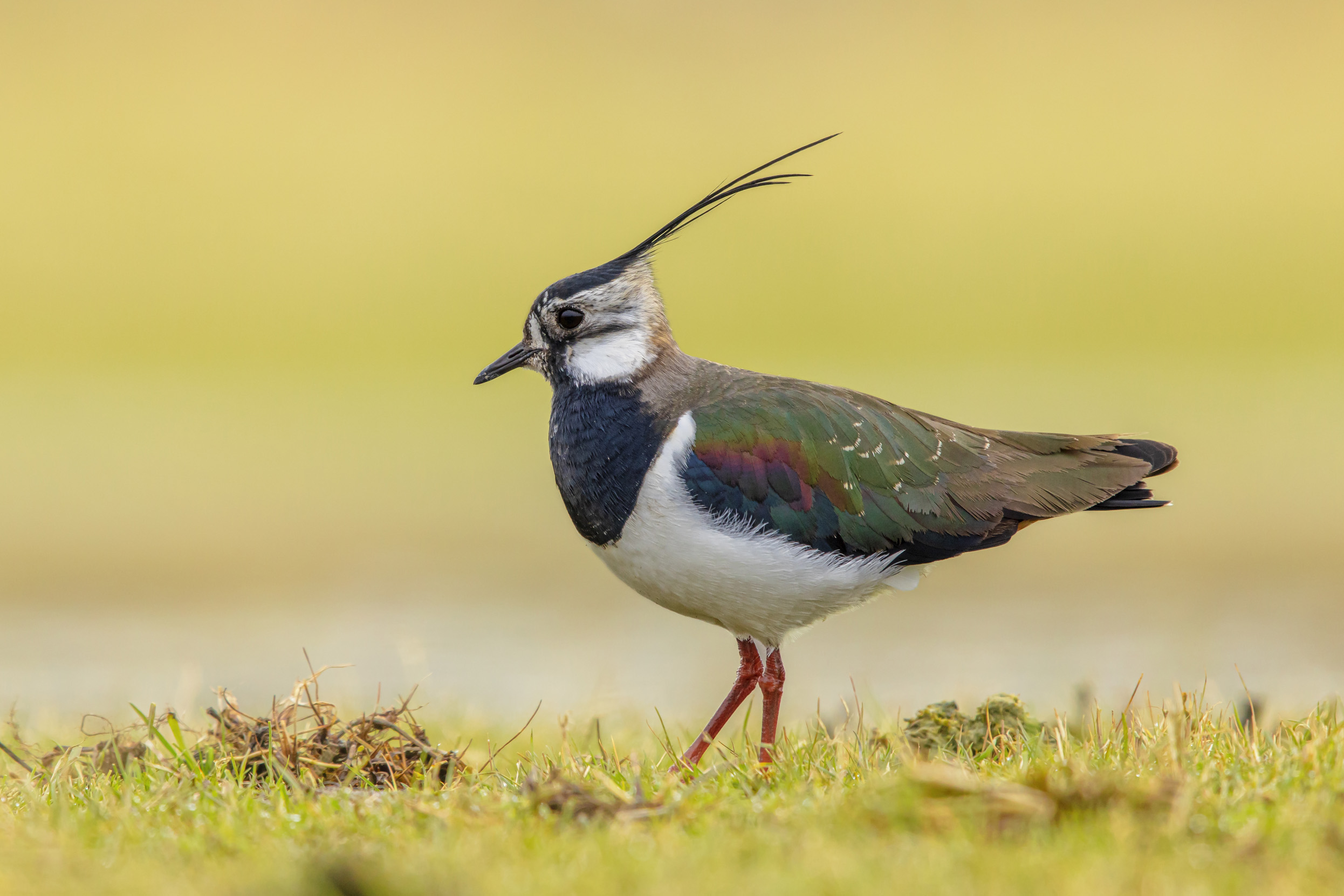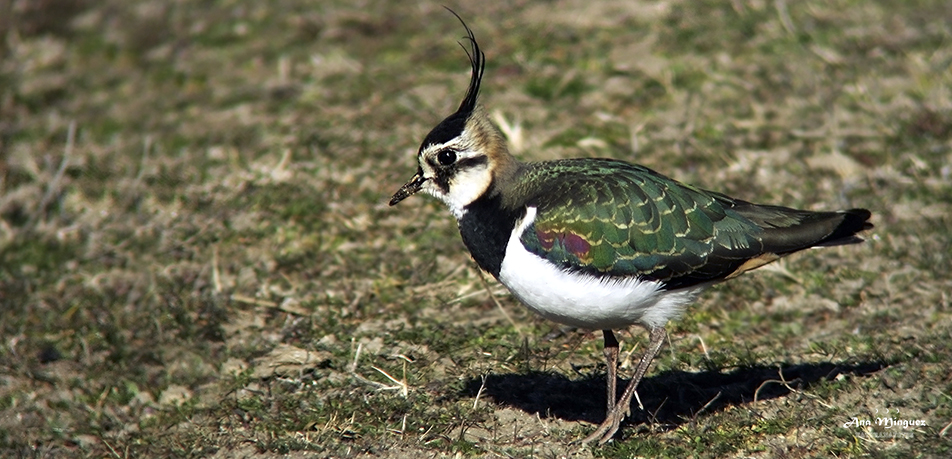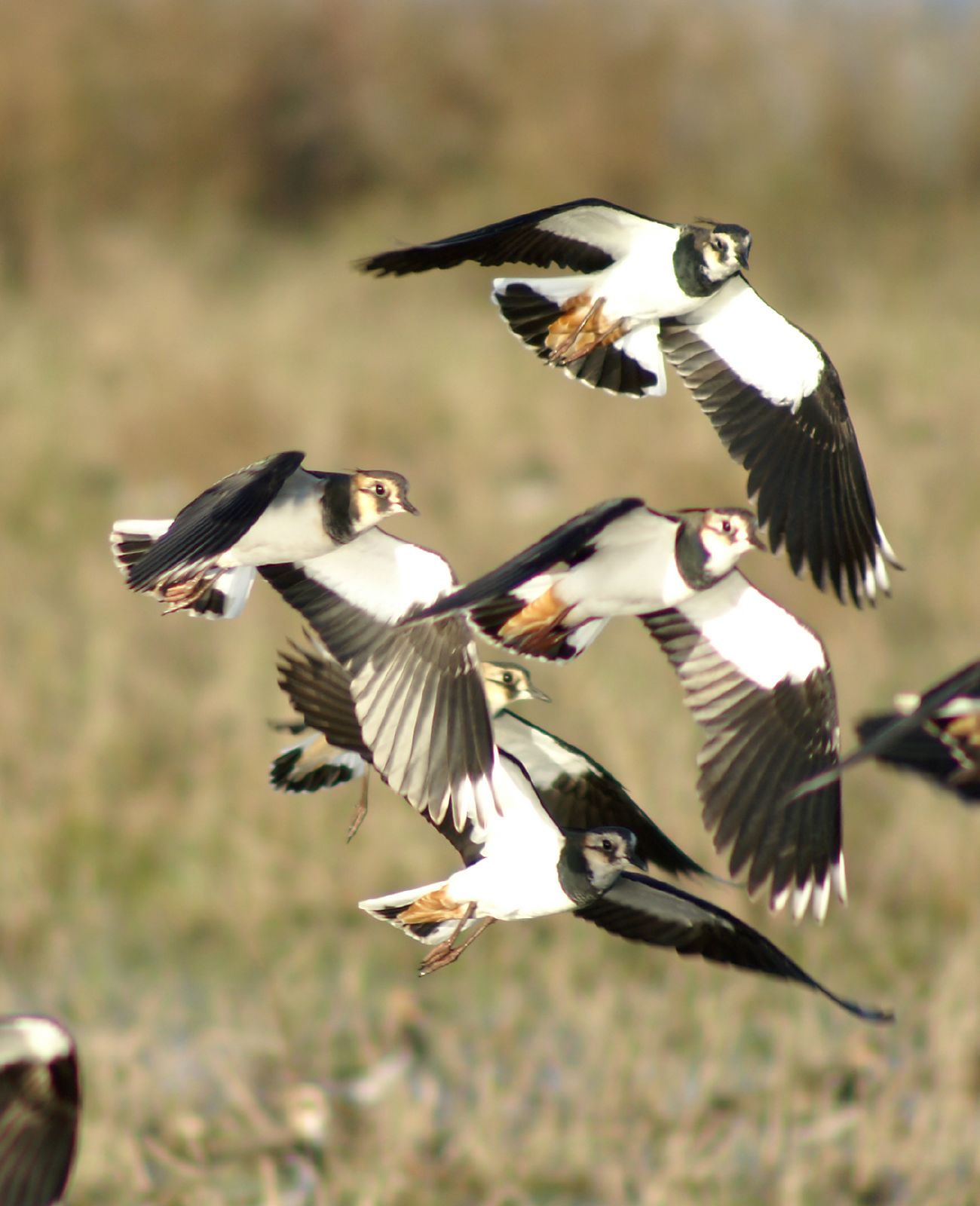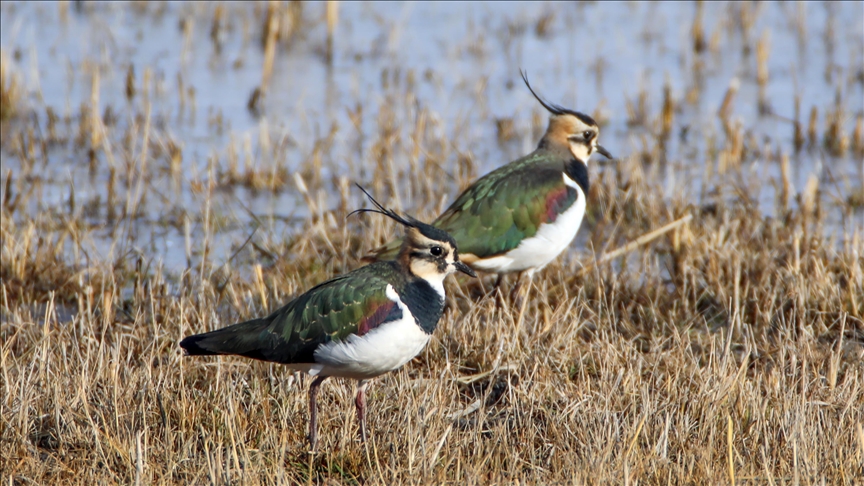



Female Lapwings mirror the striking features of their male counterparts, albeit with slightly shorter crests. During the breeding season, distinctions in facial and throat markings set them apart. Lapwing chicks, born with a precocial nature, display mottled brown backs and crowns, accentuated by dark chests from an early age. As they mature, their resemblance to non-breeding adults increases, marked by paler breastbands and shorter crests.

Characterized by stocky bodies and stout legs, Lapwings belong to the pigeon-sized wader category. With lengths ranging from 28 to 31 centimeters and a wingspan spanning 82 to 87 centimeters, they stand as elegant and well-proportioned creatures.

Vocal birds by nature, Lapwings are especially expressive during the breeding season. Males engage in captivating display flights, accompanied by a unique, almost robotic call that resonates in their surroundings. Their characteristic ‘pee-wit’ calls serve as both an alarm signal and a means of maintaining contact.

Feasting primarily on small invertebrates, Lapwings are skilled foragers on the ground. Their diet includes earthworms, snails, insects, and larvae, reflecting their vital role in maintaining the balance of their ecosystems.

Habitat-wise, Lapwings exhibit specificity while spanning diverse geographical regions. Flourishing in open landscapes with low grass cover, they thrive in unimproved pastures, open wetlands, and altered landscapes such as cereal croplands and recently plowed fields. Their presence graces many parts of the United Kingdom and the Republic of Ireland, save for certain areas in Wales, Northwestern England, and Western Scotland.

Despite their terrestrial nature, Lapwings may occasionally forage in shallow waters. However, they do not perch in trees or elevated areas above the ground.
Though not classified as endangered, Lapwings still merit attention due to their conservation status. Their population has experienced a steady decline since the 1970s, largely attributed to shifts in farming practices.




